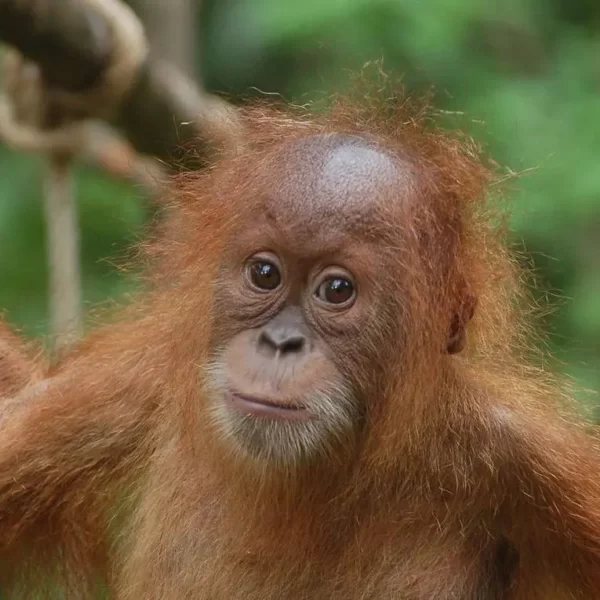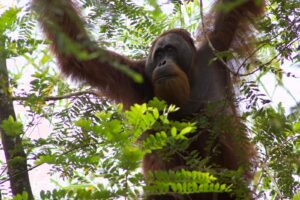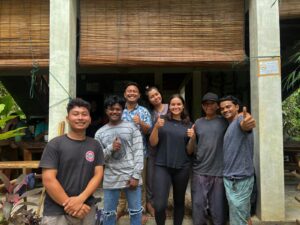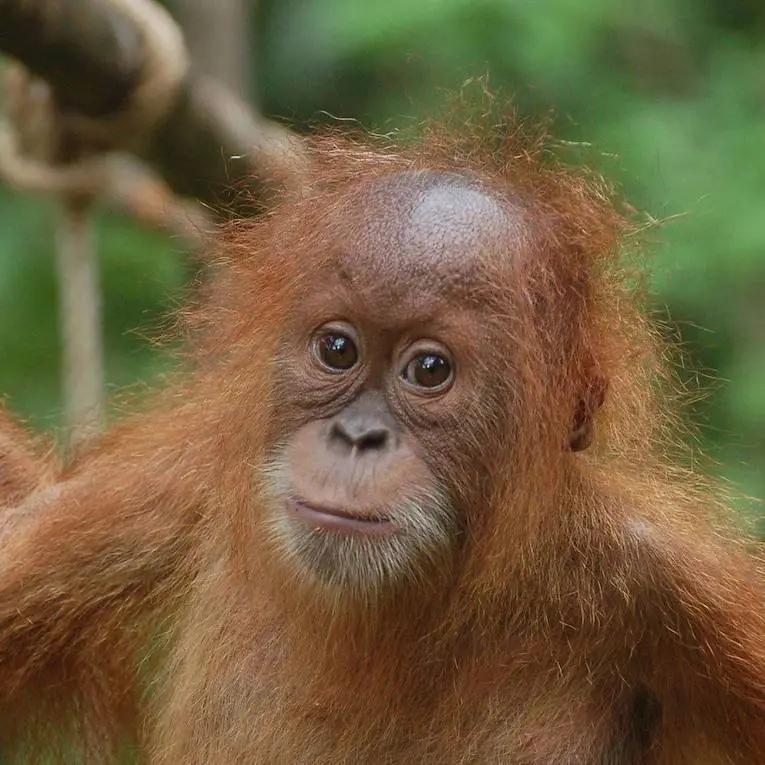
Beth talks about living with wild orangutans at the Sumatra Wildlife Volunteer project
A testimonial by Beth Tobin an animal behaviour and conservation graduate from the UK
Date of visit: March 2023
Q: Tell us about yourself and why you chose this project?
I’ve been working towards a conservation and wildlife experience for my whole educational career, but I hadn’t had any real field experience. So, when I finished university, I wanted to visit a project abroad and get the opportunity to do something with orangutans – my favourite animal. I wanted to go to a project that was in the real wild, rather than a very touristy location. Importantly, where I could make a difference.
So I chose the Sumatra Wildlife Volunteer project at Batu Kapal and worked there for a month as an Orangutan Research Assistant.
My undergraduate degree is in animal behaviour and my postgraduate is in conservation. I’ve done some zoo keeping and conservation research work, which I really enjoyed. This motivated me to pursue something more academic and research-based, rather than just animal keeping. That’s my goal.
The Batu Kapal Conservation had an established schedule for each week. Early in the morning at 6.30 am, you would begin with monitoring activities and then move on to one more task before lunch, either cleaning up plastic from the river, planting trees, or gathering seedlings and tending to the tree nursery. Afterwards, there would be a three hour lunch break. The afternoon was spent monitoring in the forest. There were also optional activities such as connecting with the locals, helping with grant applications to purchase land for conservation purposes, mapping instead of monitoring in the morning, and providing assistance to the local farmers. This was done to ensure that the farmers received more attention from the project.

Q: Did you manage to spot any Orangutans and did you come across any that had not been identified before?
Yes, I did. There was an existing group of roughly 15 Orangutans that are usually in that area. I noticed all of them apart from two. Then in the fruiting season, I noticed two or three more that were unfamiliar. One of the ficus trees started producing fruit, which drew in a lot of Orangutans that possibly originated from Bukit Lawang. I was fortunate enough to recognise two new individuals and I got to name them. In order to distinguish them from other individuals in the database, you need to take a clear photo of them with your camera. Therefore, we named one of the sub adult males Louis and we identified a pregnant female which we named Pongo after the scientific name. (Note: the scientific name for Orangutan as a species is Pongo)
Q: Can you tell me about your experiences with the project? What were the best parts?
Well, first and foremost, it was amazing to be living in the middle of the jungle, witnessing the Orangutans in their natural habitat: observing that they are breeding and watching the young apes. It gave me some hope to see that they were still managing to survive and thrive even in deforested areas and mixed farmland. Actually, I really enjoyed being on the research side of the project. I was involved in grant writing for the land purchase and data collection. I also worked with another volunteer to look for potential improvements for the future in regards to better data and results. It was very satisfying to be part of a conservation project and see the impact I was able to make.
Q: What were the more difficult aspects of your visit?
(Laughing) Definitely living in the jungle! It was a real shock to experience the heat and humidity during the treks. But I got used to it pretty quickly. Other than that, I had nothing negative to report – I absolutely loved it!
Q: Do you have a penchant for living in a rainforest?
Yes, I’m a huge fan of the thunderstorms and the wildlife noises like gibbons singing, cicadas and other insects that are so loud, plus the distinctive call of the rhinoceros hornbill flying by our camp. Occasionally, I could make out Schmollie, a male Orangutan, from my bedroom in the early morning at 5.30am as he was defending his territory when the trees were abundant with fruit. All I need to do is work on my fitness and I could potentially live there!

Q: How was your interaction with the locals?
I was impressed by the local team’s enthusiasm to learn. Despite the fact that their English wasn’t always perfect, it was clear that they were eager to develop their skills. During weekly English lessons, the team leaders had notably proficient English, whereas others were very dedicated learners. I was taken aback by their kindness, they truly were remarkable.
Q: Would you recommend this project and what tips do you have for future volunteers?
If you’re looking to have a career in conservation, I would highly recommend volunteering on this project. It gives you the chance to get hands-on experience, and to contribute your ideas and opinions. A few tips: don’t forget to bring mosquito repellent and long socks (to avoid leeches in the jungle). Also, go in with an open mind and be willing to adapt to the environment. Make sure to do some research on the area prior to your visit.

